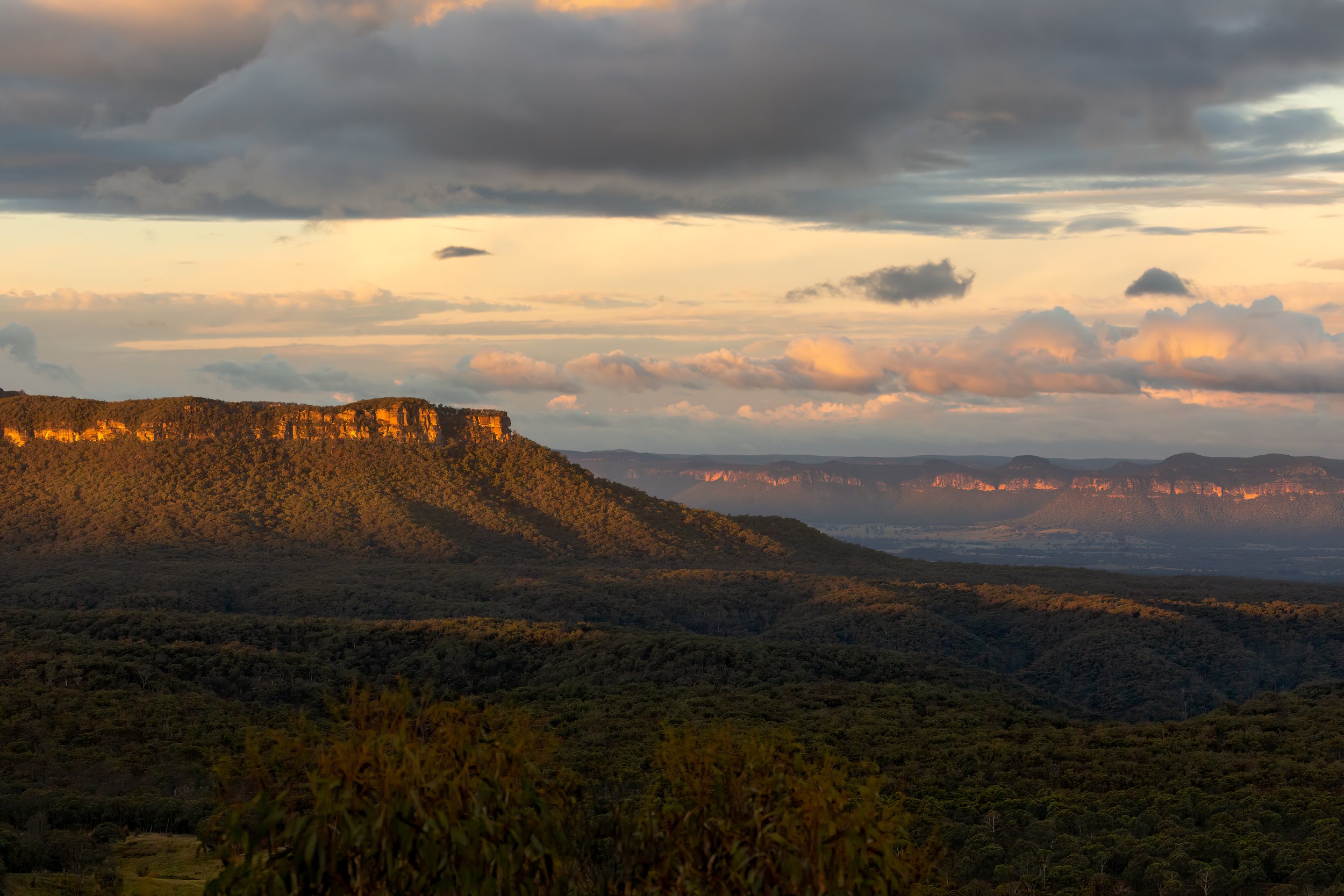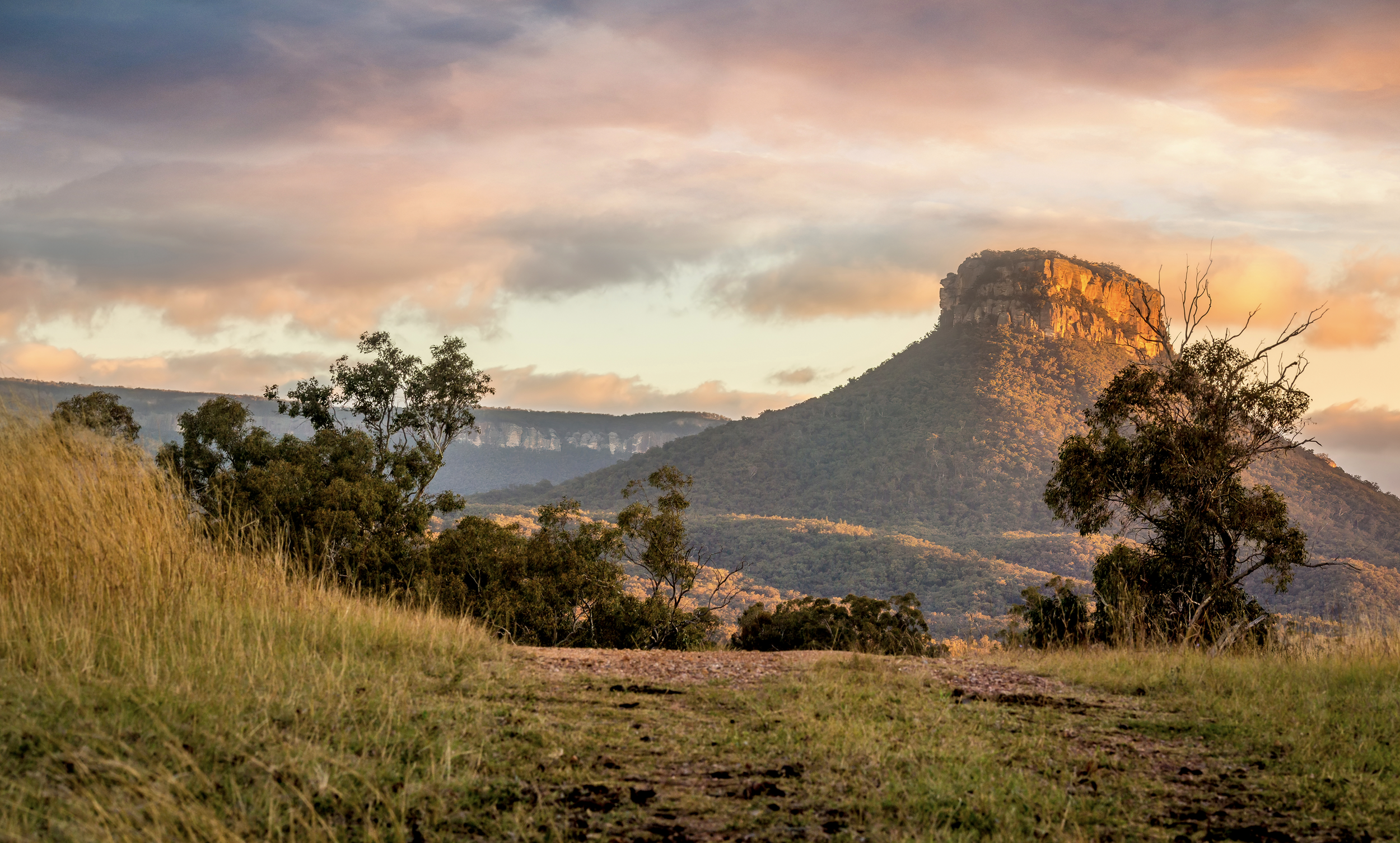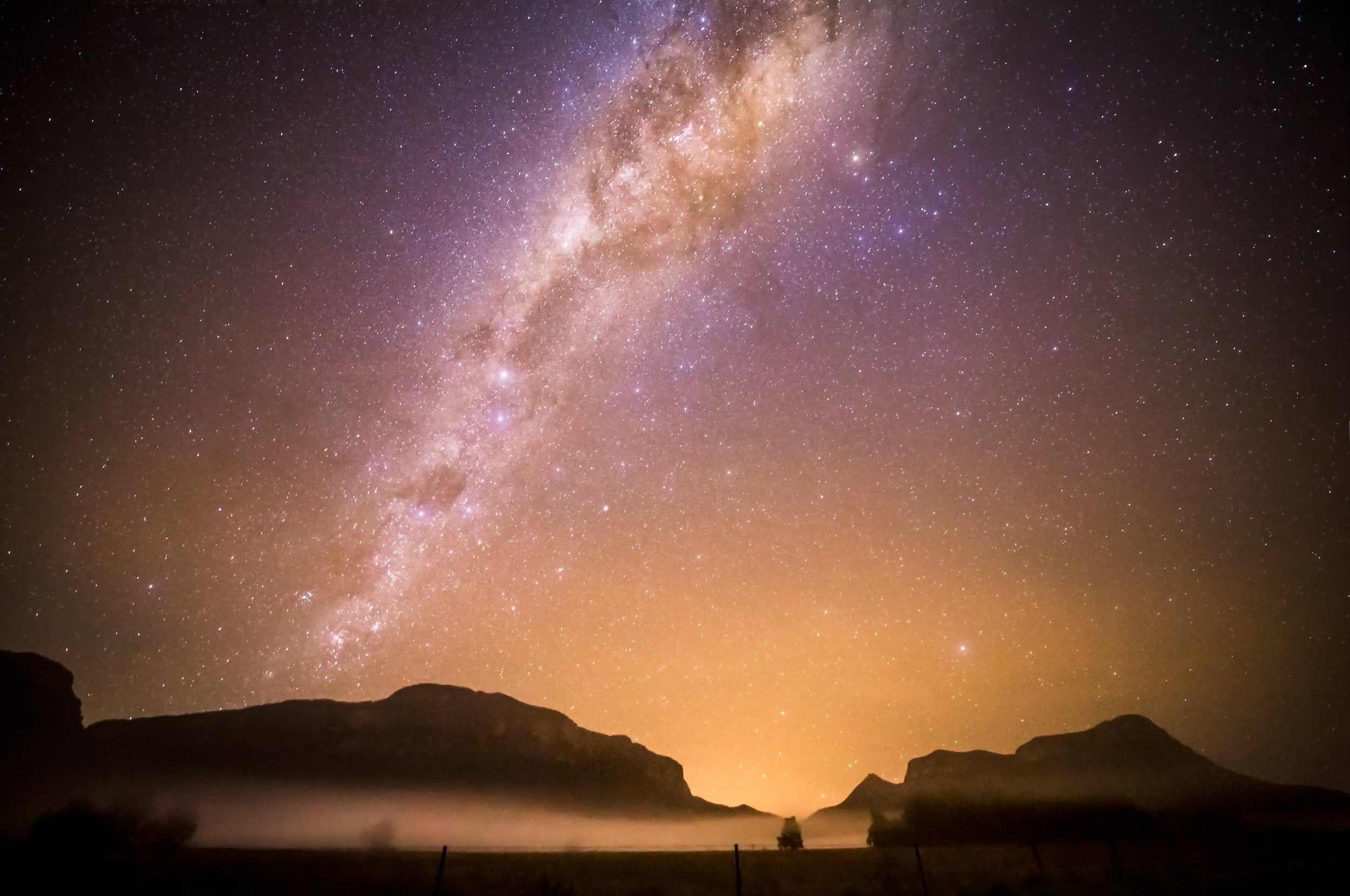Writing the Deep Valley
Retreat and Workshop in the Capertee
29 January to 1 February 2026
To know fully even one field or land is a lifetime’s experience. In the world of poetic experience, it is depth that counts, not width. A gap in a hedge, a smooth rock surfacing a narrow lane, a view of a woody meadow, the stream at the junction of four small fields—these are as much as a man can fully experience.
—Patrick Kavanagh, “The Parish and the Universe”
Up in the northwest provinces of the great sandstone plateau we call the Blue Mountains, a valley is cut by a small river that rises in the outlying ridges of the plateau, at Bogee, near Rylstone, and it flows—unaccountably it seems to me—eastward, back into the bulwark of the plateau, to join the Wolgan and with that river make the Colo, which joins the Hawkesbury-Nepean, and, at last, they all find the sea. Just a bit to the north, and still in the stone country, the Cudgegong, another small river, which goes on to water Rylstone and Mudgee and to fill a couple of dams, rises to the east of the Capertee, the one I’m describing in its handsome valley; and yet the Cudgegong, though it rises further east, flows west, and away from the plateau and on into the hungry belly of the continent.
Few things in a human life or the life of the world or of a place run as simply as you’d imagine. The divide that runs a great crescent down the east coast of Australia, from Cape York to Gariwerd and sorts the waters east and west of it, is made up of a thousand small and fractious ranges that find themselves tending somewhat unwillingly to cohere, and the notional divide from which the rivers flow either inland or down to the Pacific is as sketchy and erratic as all hell. As witnessed here at Glen Alice in the Capertee, where I am this late October among a profundity of birds and blowflies, wide pale pastures, and all these encompassing scarps, these handsome purple, ochre, grey assemblages. We’re here for a wedding anniversary (our first), and as I put it yesterday in a poem, a gift to my beloved:
The house sits at the head
of the valley, where the river slips into the plateau (under the gate of the garden of stone),
and the winds are chronic here, petulant as parrots, crazed as blowflies.
And all the long blue day the wrens run over-
due repairs on the clangorous mechanics
of what’s real. The river gets on with composing the present from the past,
and the sheoaks walk all sorrow back the hard way to the east.
I should add that the winds are not always chronic, although the birds are always profound, and the flies are only thick from time to time, especially in the spring. But the country is some of the most mesmerising I know. The valley is the plateau’s edge, and although it’s like being in the Kedumba or Kangangra, this is different again, because this is also the beginning of the inside country, of the granite slopes. The escarpments make vast and ecstatic dark statements either side of the grasslands and woodlands: buttes and mesas and pagodas and other shapely forms the old Hawkesbury sandstones have assumed in their falling.
Pantoneys Crown, Capertee Valley NSW
The valley is both deep and wide, and it holds enough form and life and history and mystery to occupy a life, or, in the shorter term, to inspire a return to the deeps of your creative self.
The valley was taken from Wiradjuri, violently, of course; this is not land anyone would surrender lightly. It was parceled up and given in large allotments, after the usual colonial fashion, to rich friends of the government. There were massacres here; there is reparation to be made, as in so many places; the terror and grief inhere in the light and the sheoaks on the river, the birdsong and, perhaps, the flies.
Though the landscape is beautiful, it is difficult—for sheep and cattle especially. The river, though it has made the valley, barely carries enough to water, especially in the dry, to sustain too many humans (and their livestock). Now the settlers harvest it from their roofs and keep it in their dams, and store it and also truck it in when they need it, but then it was hard. When the shale deposits were discovered in the 1930s and mined and processed to supplement a nation’s need for petrol during the war and after, water was brought by tunnel from nearby Newnes. Without subsidies, the shale oil enterprise was unsustainable, and the mining town of Glen Davis, near Glen Alice, which briefly flourished in the forties and fifties, was allowed to fail, and the valley returned to sadness and beauty and sandstone and sheep.
Upriver, Rylstone, on the Cudgegong, looks toward the slopes and a cluster of quite astonishing conical eroded peaks to its northeast. A pretty town, a mini Mudgee, it grew wealthy in a small way on gold and wool. The coming of the railway in the 1880s helped it along, and now it’s a charming and sophisticated village, with stone buildings from the last century, some nice cafes and a couple of pubs.
All of this makes the Capertee remarkable and special to me, as I continue to write the Divide; and to Jodie and me—we were there for my birthday last year and we spent our first wedding anniversary there this past October. It also struck me as a perfect location for a creative writing workshop. So we’re putting one on in late January 2026. We thought we’d put folks up in Rylstone at the Globe Hotel, an old pub, with good food and a couple of good meeting places. There’s other accommodation in town or deeper into the valley, if we get the numbers. We’ll split the teaching/learning between Rylstone and Glen Alice, where we’ll stay, to give folks an experience of the two very different ends of the valley. There’s wonderful kayaking on the Cudgegong, in the Wollemi National Park, close to Rylstone, where the river has been dammed at Dunns Swamp-Ganguddy. There’s walking there, too, among the remarkable pagoda formations. And there are a couple of walks we may explore, in the slopes above Glen Davis.
Dates:
29 January–1 February 2026
Fee:
$1400 AUD
Includes accommodation and tuition and the walking experience.
Payment on registration.
Extras: I’m assuming we’ll share some meals out (in Rylstone), so you should budget for supplies. Kayaking. Travel and fuel etc
What you’ll need:
Torch, first aid kit, mosquito repellant, binoculars, bandaids, water, snacks, moisture-wicking clothes, hiking boots, compass, maps, lightweight jacket, extra layers, waterproof bag, swimmers, towel, a hat, “emergency plus” app.
Walking
Capertee Valley River Walk
Distance: 5.8km return
Difficulty: Easy-Moderate Fire Trail Route
Elevation: 100m
Starting Point: Coorongooba Campground
Kayaking
Kayak solo or in pairs on the Cudgegong River with Southern Cross Kayaking.
Starting Point: Ganguddy-Dunns Swamp in Wollemi National Park 25 km East of Ryalstone.
Duration: 2 hours
Difficulty: Easy
So this is a “walkshop” like the one we ran in the High Country last April, a nice mix of indoor and outdoor inspiration, plenty of time to write and read and learn and relax. Watch the website for details. Please join us. Thursday 29 January to Sunday 1 February.
Here’s the plan.
When: 29 January to 1 February 2026
Where and what: The Globe Hotel in Rylstone, Glen Alice, Bogee, Capertee Valley. Half-day walks and kayaking in the Mugii Murum-Ban State Conservation Park, and Heritage Listed Wollemi National Park.
Kayaking with Southern Cross Kayaking:
Dunns Swamp, Gangduddy as known by the Dabee people of the Wiradjuri nation, in the Wollemi National Park is marked with pagoda rock formations, sandstone escarpments, winding river valleys and grand geological features, which shelter a rich diversity of plants, birds, and animals, and natural heritage.
Accommodation and workshop venue: The Globe Hotel 1855 is located in historic Rylstone.
Accomodation is included in the registration fee.
How we’ll work: I want the walking and the valley to do most of the talking, but of course, I'll be there to lead the conversation, set readings and prompts, workshop your pieces and guide your writing practice.
If you like the sound of all this, then register here and come along.
Total cost: $1400 each for three-nights accommodation and four days tuition and the walking experience. Plus kayaking, fuel, meals and extras.
4-Day Writing Workshop in Capertee Valley NSW
Includes 4-days tuition, 3-nights accommodation, and walking experience.
“One of our greatest living poets, and a superb teacher.”
––Peter Bishop
“Without Mark Tredinnick's teaching, I may never have dared step so fully into the poetry world.”
––Ali Whitelock,
And My Heart Crumples Like a Coke Can
“Mark is unlike any teacher I've had. If you have the chance to learn from Mark, take it.”
—Caroline Wagner






